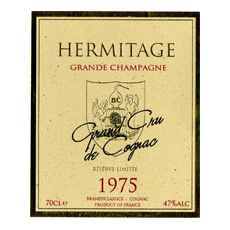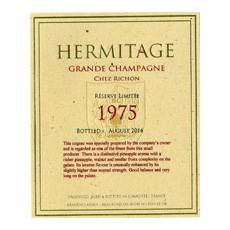The Cognac Label
 Every bottle containing alcohol must have a label showing clearly what is in it, including the quantity and alcoholic strength. Most producers of alcoholic drinks are controlled by a professional organisation who regulate what can or must be stated on the label. The cognac label is no exception and in some ways cognac is controlled more rigorously than other wines and spirits.
Every bottle containing alcohol must have a label showing clearly what is in it, including the quantity and alcoholic strength. Most producers of alcoholic drinks are controlled by a professional organisation who regulate what can or must be stated on the label. The cognac label is no exception and in some ways cognac is controlled more rigorously than other wines and spirits.
The professional body responsible for cognac is known as the Bureau National Interprofessionel du Cognac (BNIC). It is a private, state-backed organisation that not only controls the labelling of cognac but almost every other aspect of its production including production areas (crus), grape varieties, wine production, distillation and ageing. It also controls the distribution, sales and duties of every bottle produced.
 The labelling requirements for a bottle of cognac require the producer’s name and under that the cru may be added and the descriptor “COGNAC”. Modern, generic cognacs are heavily blended with cognacs coming from a wide range of producers and crus so the cru is often omitted from most modern labels. However smaller houses, who produce single estate cognacs, usually state the cru e.g. Grande Champagne or Petite Champagne. Only occasionally do producers state a cru other than the top two but sometimes the term Fine Champagne may be seen. This is used if at least 50% of the cognac in the bottle comes from Grande Champagne and the remaining from Petite Champagne. “Made in France”, with the address of the producer or negoçiant, must be included and age statements, such as vintages, can be used with approval.
The labelling requirements for a bottle of cognac require the producer’s name and under that the cru may be added and the descriptor “COGNAC”. Modern, generic cognacs are heavily blended with cognacs coming from a wide range of producers and crus so the cru is often omitted from most modern labels. However smaller houses, who produce single estate cognacs, usually state the cru e.g. Grande Champagne or Petite Champagne. Only occasionally do producers state a cru other than the top two but sometimes the term Fine Champagne may be seen. This is used if at least 50% of the cognac in the bottle comes from Grande Champagne and the remaining from Petite Champagne. “Made in France”, with the address of the producer or negoçiant, must be included and age statements, such as vintages, can be used with approval.
At Hermitage Cognacs we also add a back label that helps our customers understand more about the cognac they have chosen. This label includes details such as where the cognac was made, how it was distilled and aged and its individual aromas and flavours. Also, in the case of a vintage cognac, it shows the bottling date. This is important as it tells the customer how long the cognac has been aged in the barrel.
Last, but not least, every bottle of spirits over 40% alcohol by volume carries a UK government duty stamp that is applied in France and can be crossed checked with the UK shipping documents issued by the BNIC.
Read more Technical Topics on our Brandy Education page.
